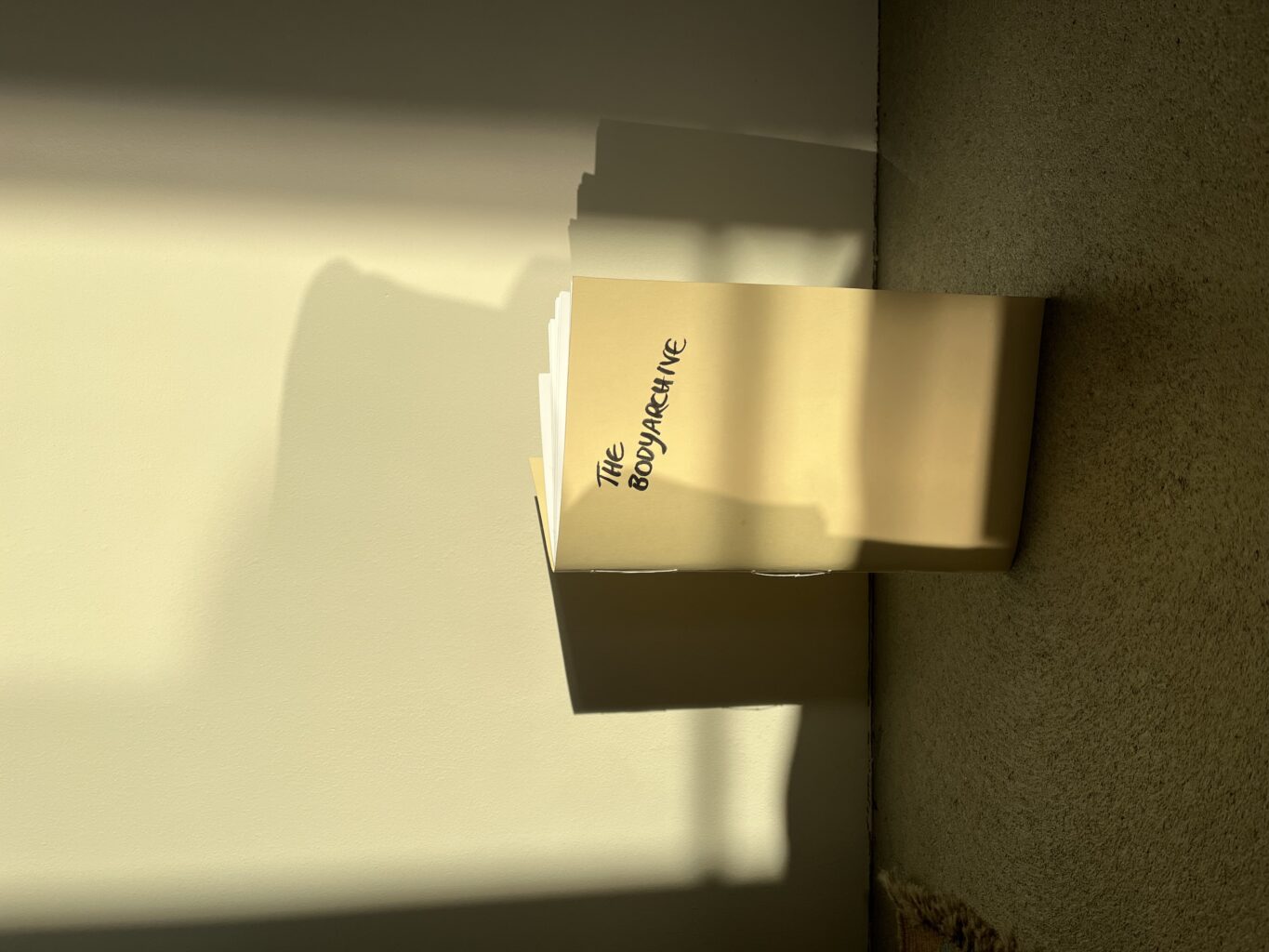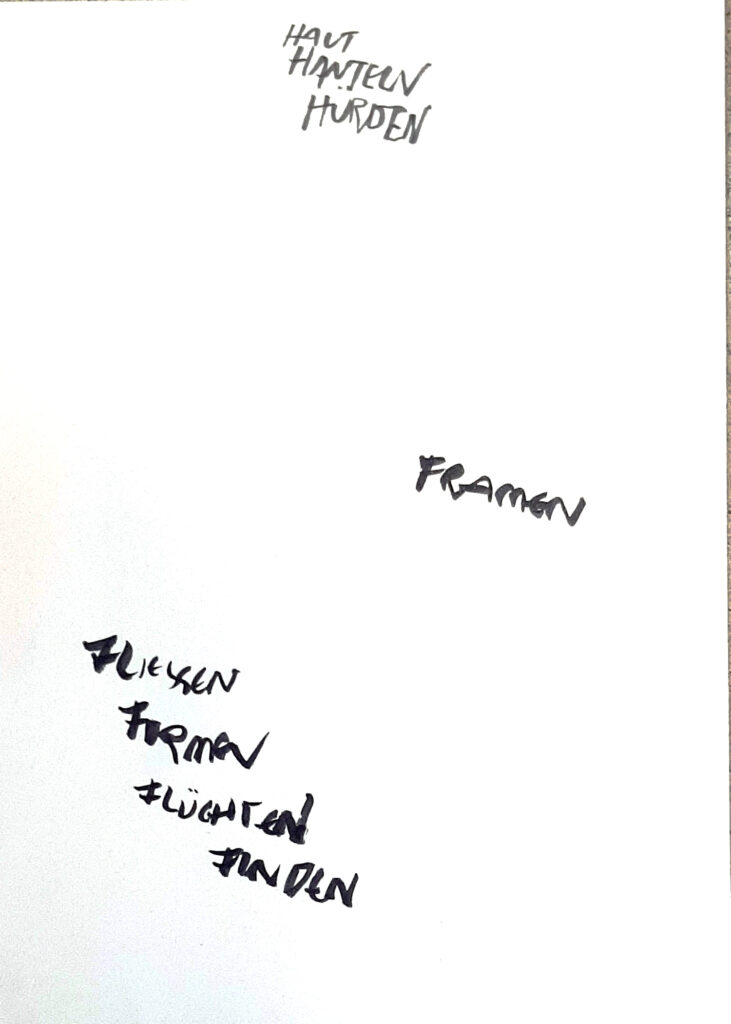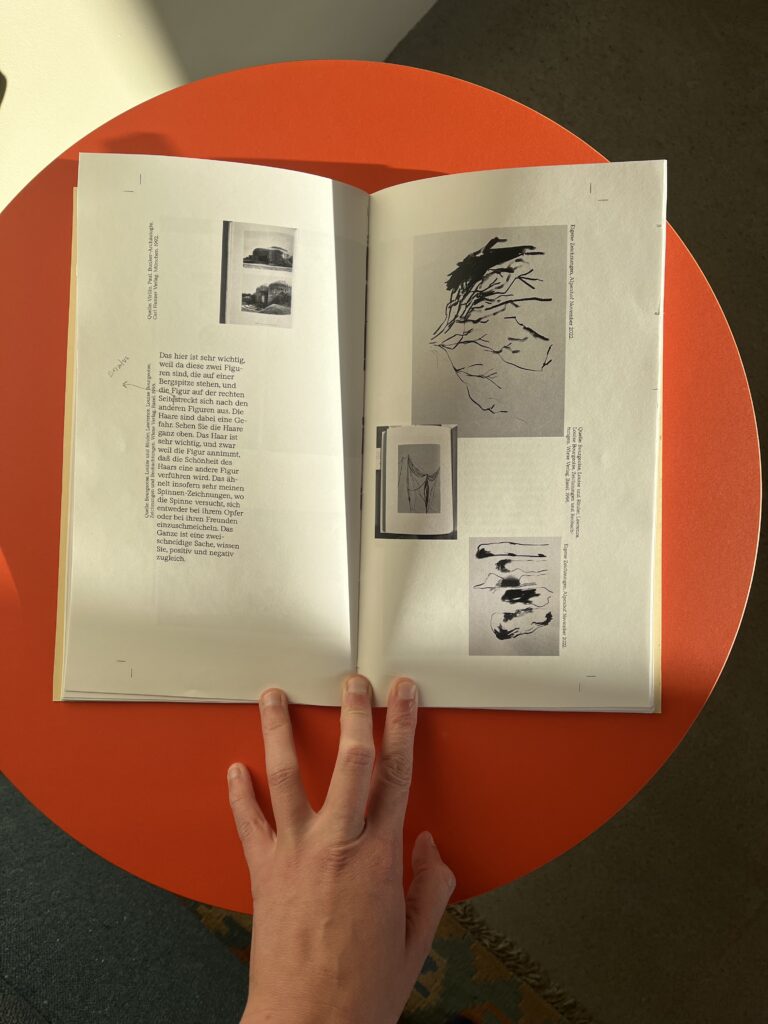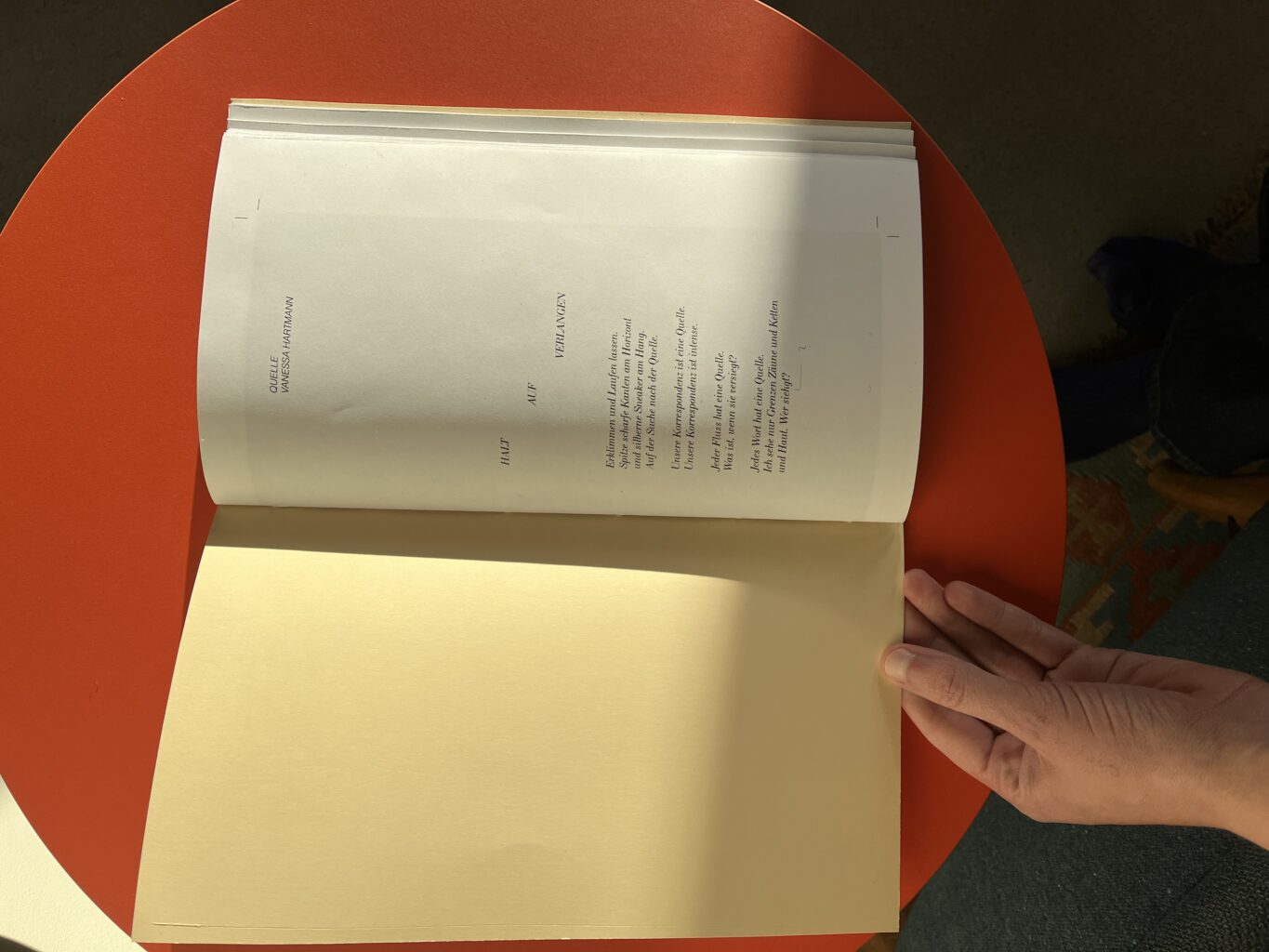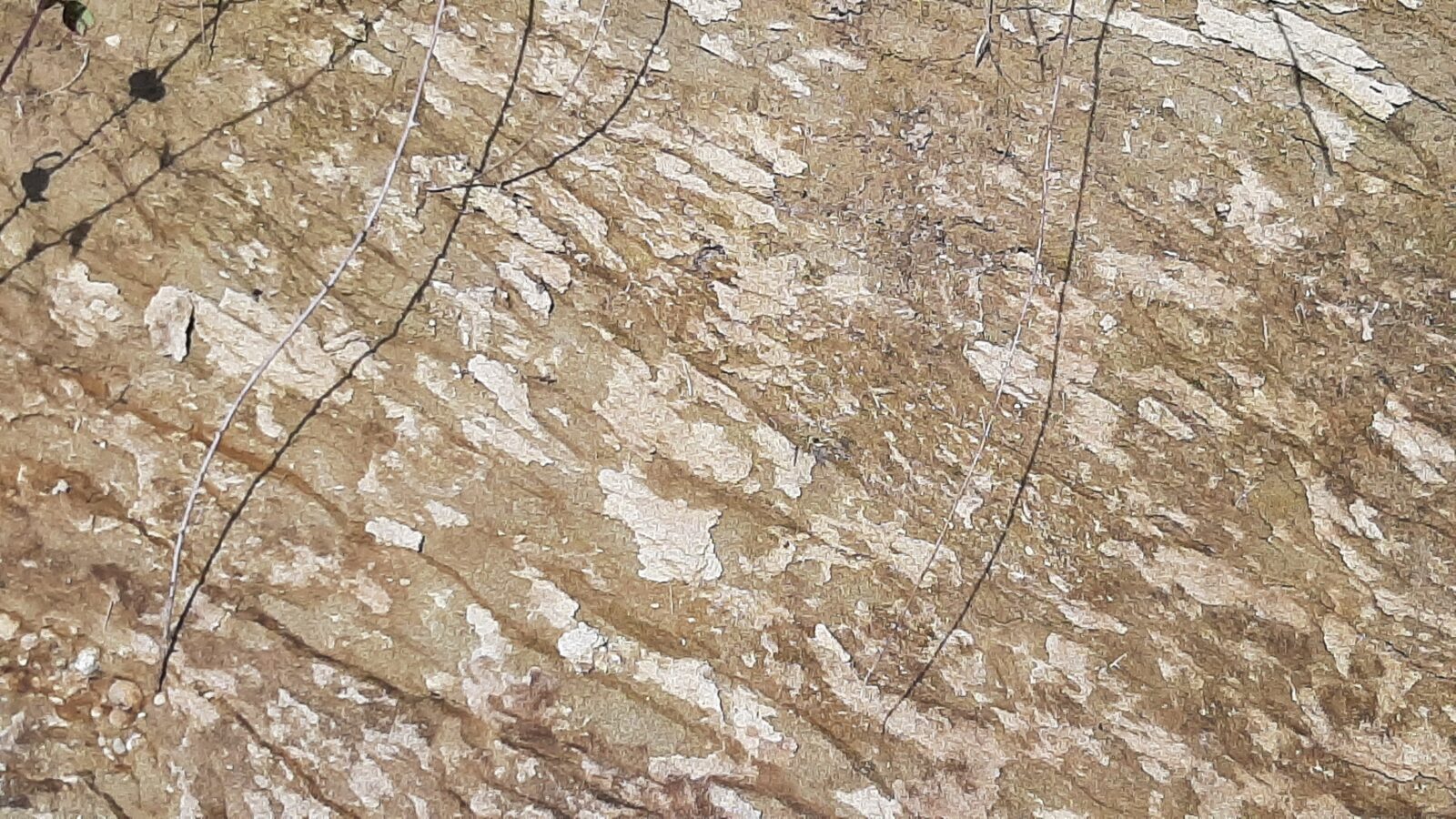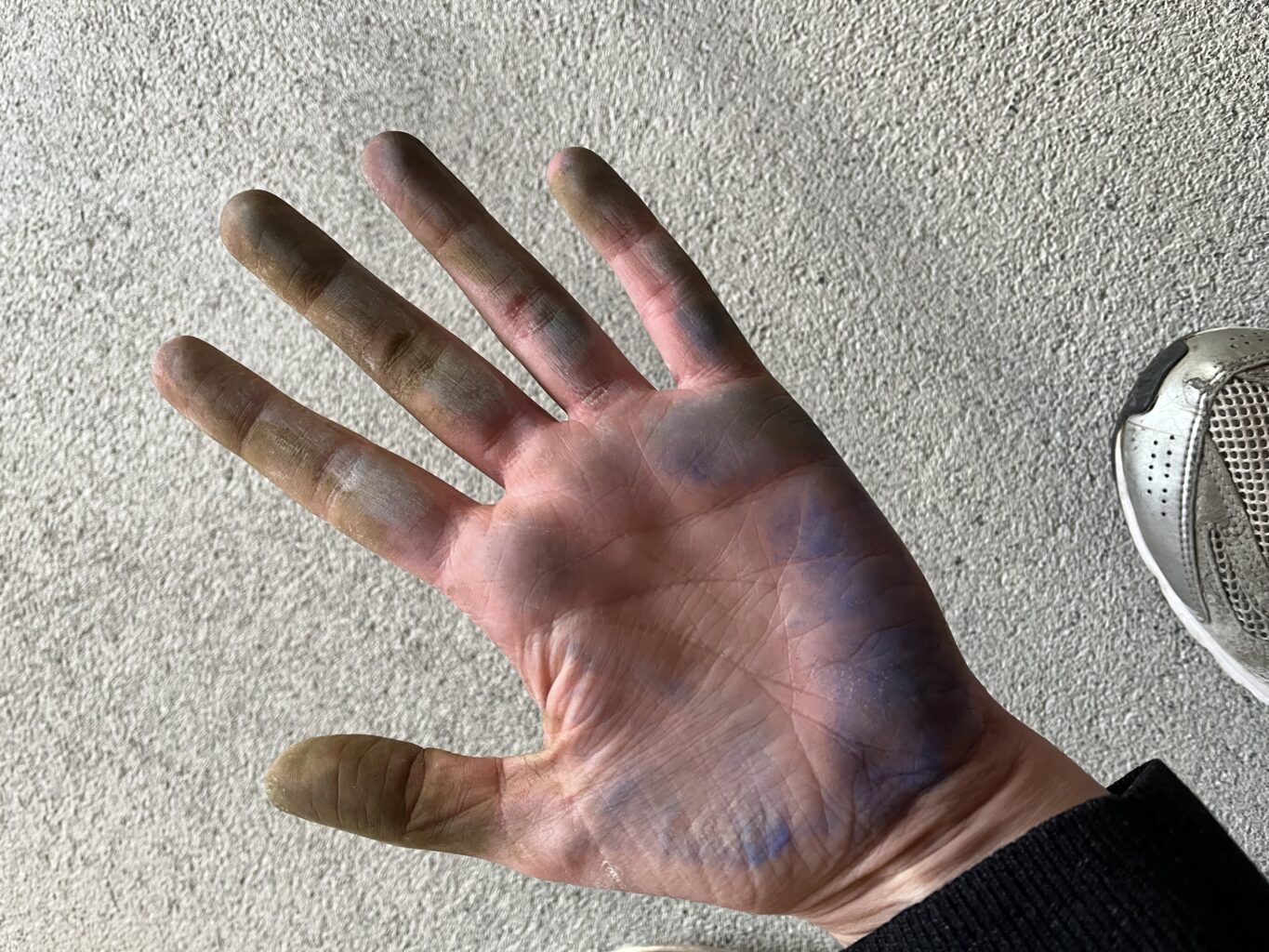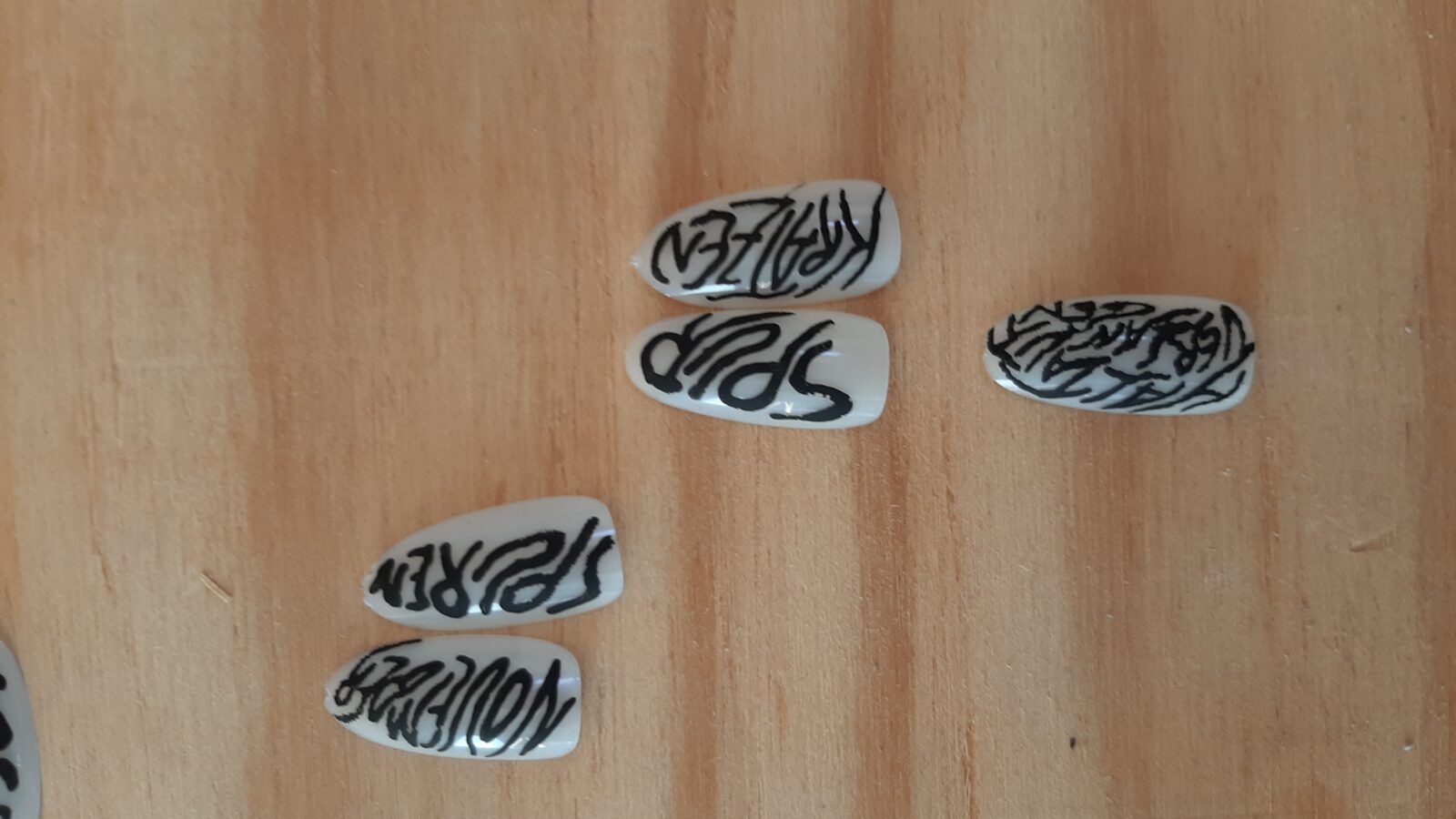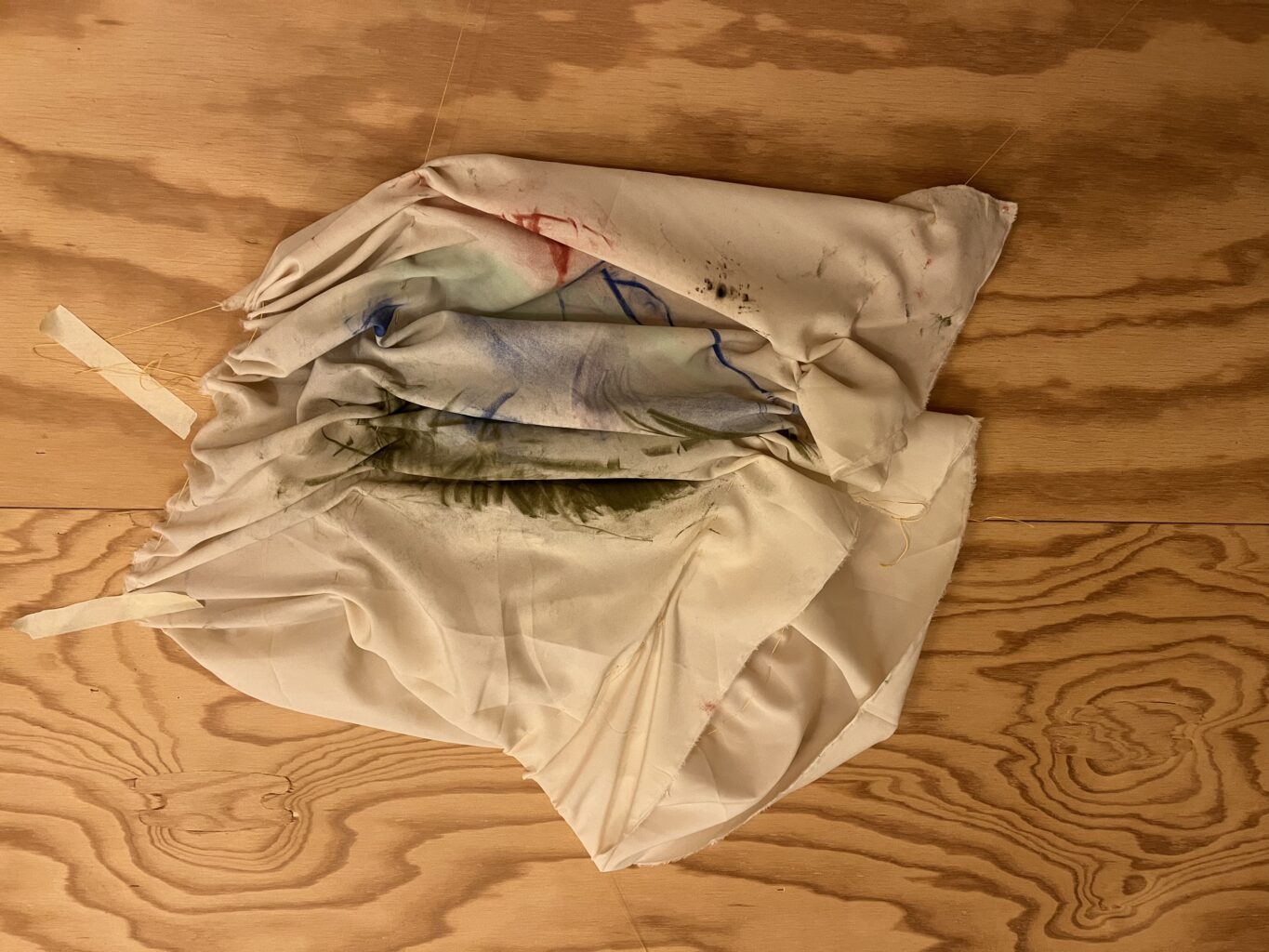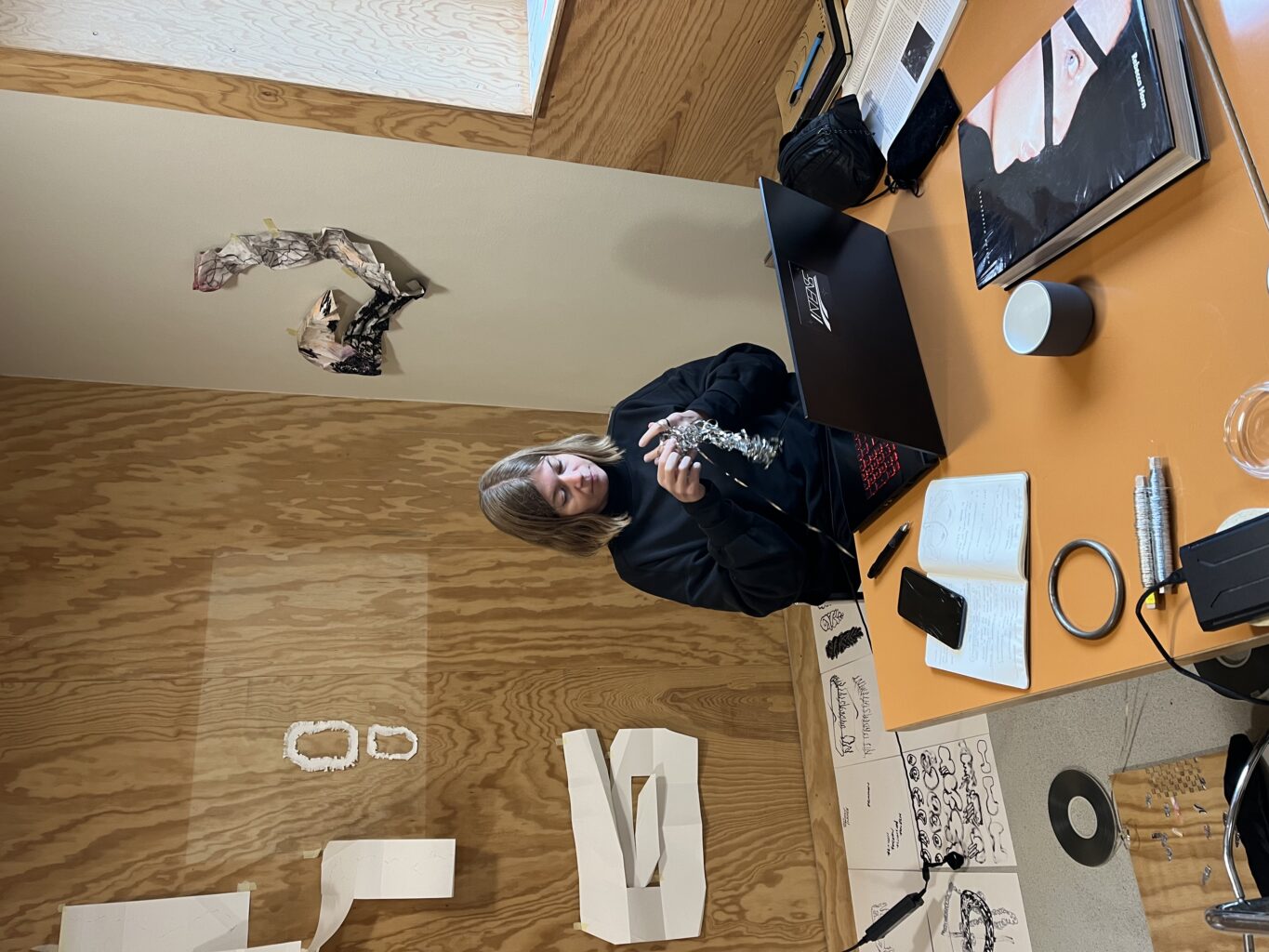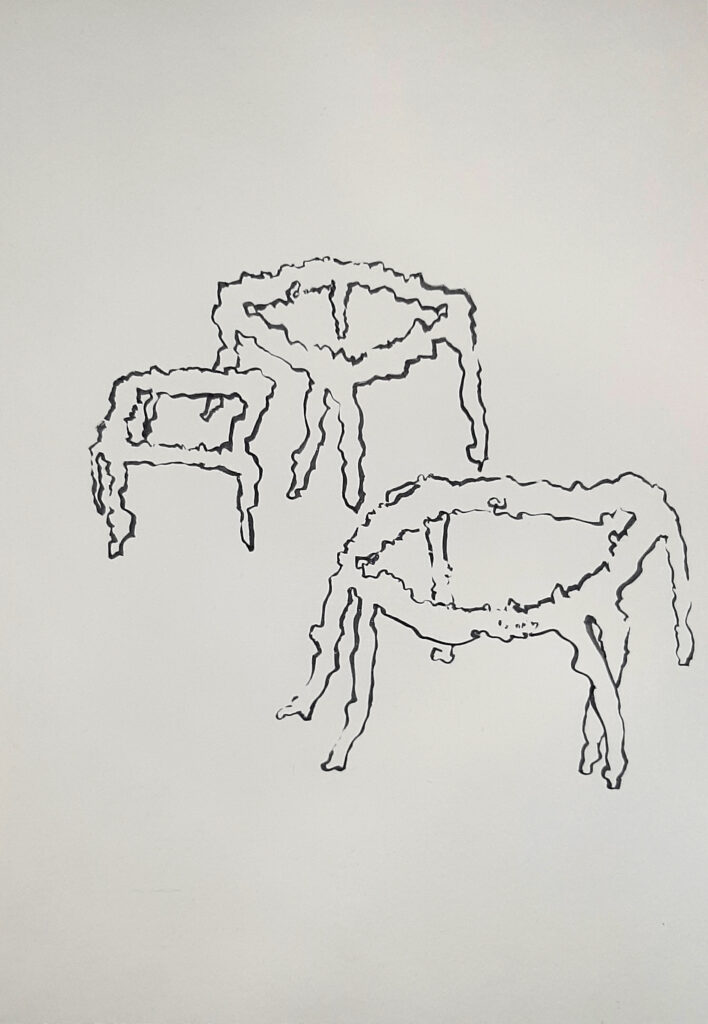How many bodies are we?
Haut– und Hüllenträger*innen (1) (X Hella Berent)*
Bodies of time
bodies of emotion
bodies of memory
bodies of action
bodies of borders (2)
Metamorphosen; Häutungen,
– slow processes of change (3)
our bodies are stages for expressions
of the collective memory
Erfahrungen des Individuums als soziales Wesen
schreiben sich hier ein. (4)
Two bodies are on the one hand the self and on
the other hand society. Sometimes they come
so close to each other that they almost dissolve.
Sometimes they are seperated by a considerable
distance. (5)
How do we archive?
(What about cultures that don‘t wriitten routines?)
Body language (6)
My body of time can recontruct the past (7)
Schmerz–Archiv (8)
Handlung / Zugriff (9)
The archive as a general system of formation & transformation. (10)
Erinnerungen selbst sind nicht fassbar.
Wach bleiben sie nur, wenn sie wieder heraufgeholt,
wenn sie befragt werden. (11)
If our bodies are landscapes, what does it mean?
Der Körper als Ort der Formung
– äußerer, wie innerer Wahrnehmung (12)
Verkörpern (13)
(Re) Defining
(emotional)
space
language
categories (14)
Licht fällt in den aufgerissenen Körper macht Gedanken zu Gegenständen. (15)
«We produce knowledge through our body. How do we work in our artistic practice with(in) our body archive? Coming from drawing and textile we work as a tandem reflecting on our own and found (Andreas-Züst-Bibliothek) archives as survivors of / with time. This resulted in a drawn and written journal.»
Marie Schumann (*1991) is an artist working mainly with textiles. Her focus moves between (soft) spacial intervention, process experiments and research into the multi-layered metaphor of the textile in our society. She is strongly connected to the cultural technique of weaving, which as a binary system is the basis for our digital world.
Vanessa Hartmann (1987*) is an artist using mainly the practise of drawing as a tool of thinking and reflecting. With different visual metaphors she questions the act of drawing as an archival method. Which codes are embodied in our social roles, daily routines, languages and actions? Bodies, as well as societies, consist of particles, of fragments and are in constant repetetive transformation: Repetition as an intstrument of knowledge, of remembering, of questioning, but also as an instrument of power.
Text: Marie Schumann, Vanessa Hartmann
November 2022
Quellenverzeichnis
2, 4, 5, 12 Dorota Sajewska: „Körper-Archiv. Wie performative Künste die affektive Interdependenz von Wissen und Geschichte vermitteln“. In: INSERT. Artistic Practices as Cultural Inquiries, Ausgabe 1, Zonen der Gegenwart – Praktiken der Annäherung, 2021, URL: https://insert.art/ausgaben/zonen-der-gegenwart-praktiken-der-annaeherung/koerper-archiv (letzter Aufruf: November 2022)
1, 15 Hella Berent, Die Besteigung der Nähe, Mit Beiträgen von Helmut Frielinghaus, Hilka Nordhausen und Hannes Hatje. Fotografien von Lothar Schnepf, Hella Berent und Hannes Hatje. Dieses Buch erschien anlässlich der Raum – Installation im Oldenburger Kunstverein vom 27. Januar bis zum 22. Februar 1985
11 Walter Benjamin, https://insert.art/ausgaben/zonen-der-gegenwart-praktiken-der-annaeherung/this-actof-opening/ (letzter Aufruf: November 2022)
10 Michel Foucault, https://d-nb.info/966423607/34 (letzter Aufruf: November 2022)
3, 6, 7, 8, 9 ,13, 14, eigene Quelle


